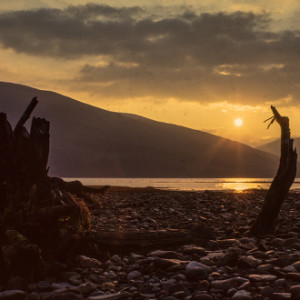35 mm Colour Slide.
I’m still in reminiscing mode, partly because I have the challenge to take inspiration from a black and white photographer and produce an inspired picture. Like most of the great monochrome photographers, I started shooting mono because it was all that was available (and there all similarity ends). Taking inspiration from someone like Ansel Adams is not easy, his techniques were based around the technology of his age – plate cameras - and his subjects and compositions were based on the availability of the Yosemite Valley. Yes I can gaze in awe at his wonderful pictures and be inspired, in a very general sense, to get off my butt and out into the big wide world with my camera but, when I’m confronted with the Pentland Hills, his work offers me very little help. That doesn’t mean that there is a shortage of fantastic pictures to be had in the Pentlands, it’s just that Adams might not be much help to me in finding them. Others may, of course, disagree.
For many years I resisted moving to colour because I had no control over the processes. The Blip is of a 35 mm colour slide taken, I think, in 1970 on the West Coast of Scotland when on a camping holiday with my young lady. The post processing consisted of cropping the picture, a process that would have taken at least half an hour (assuming that I got it right at the first attempt) plus setting up time. No other control was possible. Some years later when colour printing became popular, you could do a bit of dodging and burning and could correct the colour temperature, but that was very hit and miss; it also carried a serious risk of spilling developing chemicals over your Axminster. At least cropping was easy, but you had no control over contrast. Mono, on the other hand, gave you much more control and was simple and repeatable.
I often have discussions with a friend about the best way to archive documents; he insists that physical copies are the best, I claim electronic copies. I present this slide as my evidence, it is filthy inside its glass mount, and I suspect that a lot of the dirt is alive and actively breeding.
The extra is the picture itself, cleaned up as much as my patience allowed, and enhanced beyond my wildest dreams back when I took the original, though it still demonstrates the gulf there is between the film technology of my youth and even a simple modern point-and-shoot. It was taken on a Praktica FX2 with the Tessar 50 mm f:2.8 lens.


Comments
Sign in or get an account to comment.


